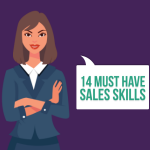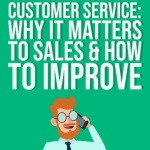98.7% Of all customers recommend us, we're so confident about our results we publish all reviews and stats
View Live Stats View Reviews
 Successful Sales Closing
Successful Sales Closing
Boost Sales Revenues & Profitability
Face to face / Online public schedule & onsite training. Restaurant lunch included at STL venues.
From £495 List price £650
- 1 day Instructor-led workshop
- Courses never cancelled
- Restaurant lunch
Syllabus
Who is this course for?
This one-day course is designed for sales professionals across all industries who are looking to refine their skills in closing sales effectively.
It is ideal for individuals who interact directly with clients and seek to enhance their ability to understand customer needs, overcome objections, and confidently negotiate successful deals.
Whether you are new to sales or have years of experience, this training provides valuable insights and practical techniques to boost your sales performance and achieve measurable results in closing deals

Benefits
This training course offers several key benefits for business professionals. Participants will gain a deeper understanding of customer psychology and effective communication strategies, equipping them to build stronger client relationships.Through practical exercises and scenarios, attendees will sharpen their sales closing techniques and learn how to handle objections with finesse.
Moreover, mastering negotiation skills will enable participants to achieve mutually beneficial outcomes, ultimately leading to increased sales success and enhanced confidence in managing complex sales situations.
By the end of the course, participants will have a tailored action plan to apply their newly acquired skills immediately, driving tangible improvements in their sales performance.
sales.
Course Syllabus
Understanding Customer Psychology
Explore customer buying behaviour and decision-making processes
Techniques for identifying customer needs and motivations
Understanding the emotional triggers that influence purchasing decisions
Effective Communication in Sales
Strategies for building rapport and trust with potential client
Enhancing listening skills to better understand client requirements
Verbal and non-verbal communication techniques in sales
Importance of clarity and concise messaging in sales conversations
Mastering Sales Closing Techniques
Different approaches to closing a sale: direct, assumptive, and consultative.
Exercises to practice closing techniques
Understanding the timing and signals for initiating a close
Crafting compelling closing statements that resonate with the customer
Overcoming Objections
Common sales objections and how to handle them effectively
Techniques for turning objections into opportunities
Building confidence in responding to objections gracefully
Strategies for preemptively addressing potential objections
Negotiation Skills in Sales
Principles of effective negotiation in sales
Strategies for achieving win-win outcomes
Recognising and leveraging negotiation styles
Techniques for maintaining a collaborative atmosphere during negotiations
Prices & Dates
What you get
"What do I get on the day?"
Arguably, the most experienced and highest motivated trainers.
Face-to-face training
Training is held in our modern, comfortable, air-conditioned suites.
Lunch, breaks and timing
A hot lunch is provided at local restaurants near our venues:
- Bloomsbury
- Limehouse
Courses start at 9:30am.
Please aim to be with us for 9:15am.
Browse the sample menus and view joining information (how to get to our venues).
Refreshments
Available throughout the day:
- Hot beverages
- Clean, filtered water
- Biscuits
Online training
Regular breaks throughout the day.
Learning tools
In-course handbook
Contains unit objectives, exercises and space to write notes
24 months access to trainers
Your questions answered on our support forum.
Training formats & Services
Training Formats & Services
|
Training manual sample
Below are some extracts from our Successful Sales Closing manual.
People choose to buy for a variety of
reasons. By understanding the
motivations of our customers, we can tailor our sales approach to meet their
needs
1. Need
Recognition
- Basic Needs: People buy to fulfil basic needs such as
food, shelter, clothing, and safety.
- Psychological Needs: Purchases can also fulfil psychological
needs like self-esteem, belonging, and personal growth.
2. Desire
for Solutions
- Problem-Solving: Many purchases are made to solve
specific problems or challenges. For example, buying a new laptop to
replace an old, malfunctioning one.
- Convenience: Products and services that save time and
effort are highly appealing. Think of IT systems or outsourcing services.
3.
Emotional Triggers
- Impulse Buying: Emotions can drive spontaneous
purchases. Feeling happy, sad, or stressed can lead to buying as a form of
emotional release or reward.
- Status and Image: Many purchases are made to project a
certain image or status. Luxury interiors in an office will project a
certain status.
4. Social
Influences
- Peer Pressure: People are influenced by the buying
behaviours of others. If everyone in an industry is using a particular
product, an individual may feel compelled to buy it too.
- Trends and Fads: Media, influencers, and societal trends
can heavily impact purchasing decisions. Items that are trending on social
media often see spikes in sales.
5.
Cognitive Dissonance Reduction
- Consistency with Beliefs: People prefer to make purchases that
align with their existing beliefs and values to avoid cognitive
dissonance. For instance, environmentally conscious consumers prefer
eco-friendly products.
- Post-Purchase Rationalisation: After making a purchase, people tend to
justify their decision to feel satisfied and confident about their choice.
6.
Perceived Value and Utility
- Cost-Benefit Analysis: Customers weigh the benefits of a
product against its cost. A product that offers higher perceived value is
more likely to be purchased.
- Functionality and Quality: Practicality, durability, and the
quality of a product significantly influence buying decisions.
7.
Marketing and Advertising
- Brand Awareness: Effective marketing campaigns create
awareness and familiarity with a brand, increasing the likelihood of
purchase.
- Promotions and Discounts: Sales, discounts, and promotional offers
can trigger buying behaviour by creating a sense of urgency and perceived
savings.
8. Economic
Factors
- Income Level: A person's purchasing power is directly
influenced by economic security.
- Economic Environment: The overall economic climate, including
inflation, recession, or economic growth, affects consumer confidence and
spending habits.
9. Habit
and Routine
- Brand Loyalty: Repeat purchases often stem from brand
loyalty developed over time due to consistent satisfaction with a brand.
- Convenience and Familiarity: People often buy from brands they are
familiar with out of habit, as it simplifies decision-making.
10.
Personalisation and Customisation
- Tailored Experiences: Products or services that can be customised
to meet individual preferences and needs tend to attract more buyers.
Personalised experiences enhance customer satisfaction and loyalty.
What can you offer your customers to satisfy
each of these needs?
Thanks. Your download will begin shortly.
Please help us
Share or create a link to this manual today!
Just follow these simple instructions...









